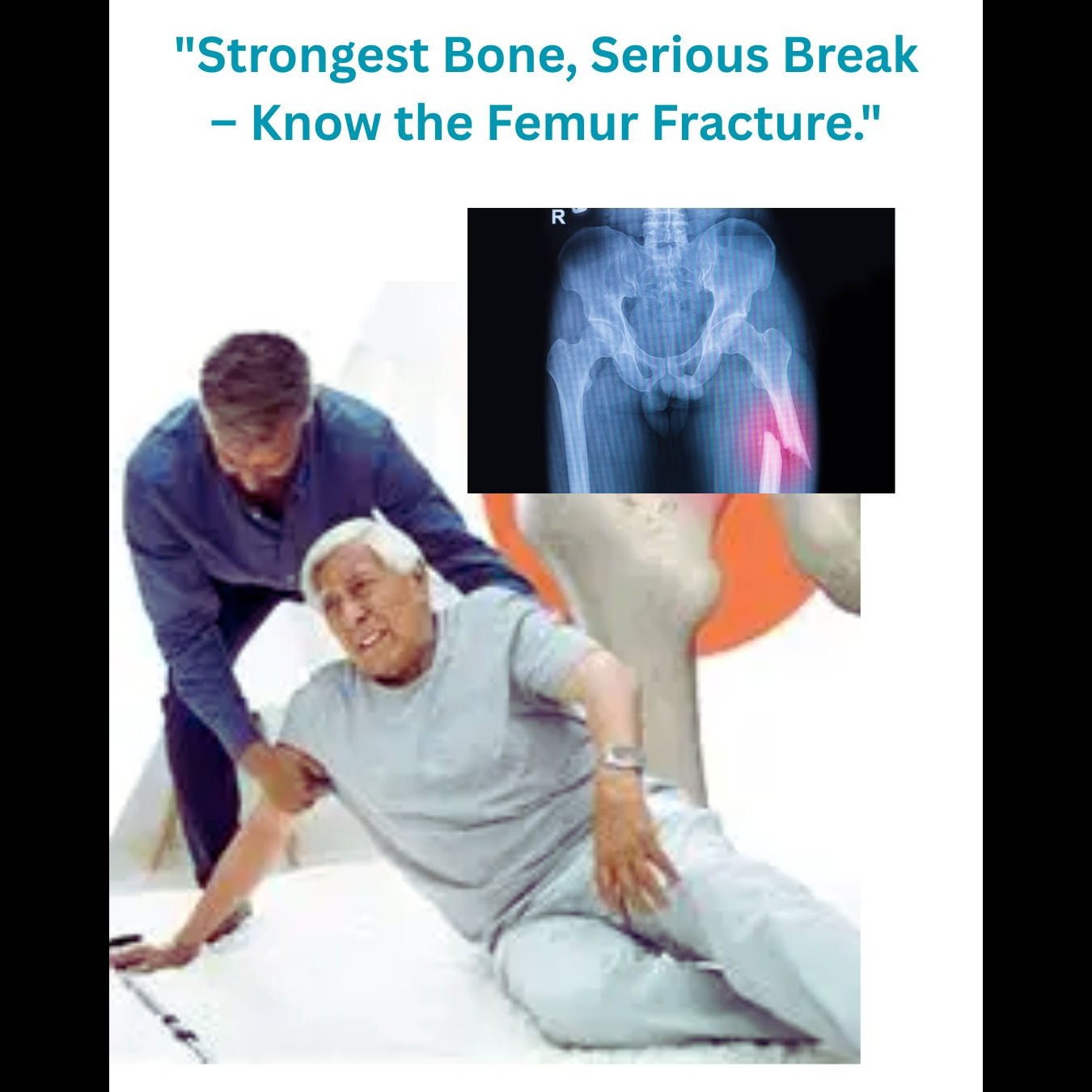+918048040021

This is your website preview.
Currently it only shows your basic business info. Start adding relevant business details such as description, images and products or services to gain your customers attention by using Boost 360 android app / iOS App / web portal.
'Femur Fracture' means a fracture (broken bone)...

'Femur Fracture' means a fracture (broken bone) of the thigh bone (femur). The femur is the largest and strongest bone in the human body. It extends from the pelvis to the knee. What is a Femur Fracture? When the femur bone breaks due to an accident, heavy impact, fall from height, or bone weakness in old age, it is called a Femur Fracture. Types of Femur Fracture: Proximal Femur Fracture (Hip Fracture) – Fracture near the top of the thigh bone (close to the hip) Shaft of Femur Fracture – Fracture in the mid-section of the femur Distal Femur Fracture – Fracture near the lower end of the femur, close to the knee 🔍 Symptoms: Severe pain (in thigh/hip/knee) Swelling Inability to walk or move the leg Uneven leg length Leg appears twisted or deformed Bleeding (in high-impact injuries) Causes: Road traffic accidents Falls from height Bone degeneration (Osteoporosis – especially in elderly people) Sometimes due to cancer (Pathological fracture) Treatment: Surgical treatments: Intramedullary Nailing – A rod is inserted inside the bone Plating with Screws – Fixing the bone using metal plates and screws Hip Replacement – For elderly patients with proximal femur fractures Non-surgical treatment: Traction / Cast – Used in selected cases when surgery is not suitable Rehabilitation: Physiotherapy Gradual movement and weight-bearing training Muscle strengthening exercises Why is Femur Fracture more serious in elderly people? Bones are weaker (Osteoporosis) Higher risk of falling Prolonged bed rest can lead to complications (lungs, metabolism, etc.

